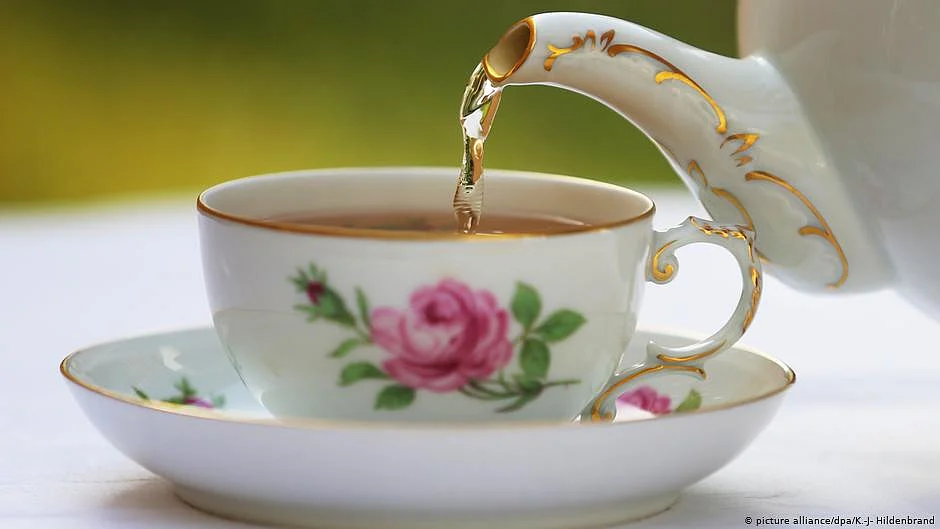Tea and its multiple benefits: The new key to health
Tea is now an integral part of our food and beverage. Mixed with other native herbs and spices, it can be extremely beneficial for health, recent research has shown

All of us like a hot cup of tea. We enjoy it in the rainy season, paired with pakodas. We like a hot cup in the morning, and after coming home from work. We love taking tea breaks to gossip about work. And we find different excuses to have a cup!
Tea was historically cultivated in China for centuries, and traded with the Middle East through the silk route, but it never became popular in India, except in Kashmir and Ladakh. It was smuggled to India by the East India Company, who wanted to grab a monopoly in the global market by growing it in India. Although their plantations in Assam, Darjeeling and Nilgiris became successful, many at that time considered tea a foreign imposition meant only for British profits. However, the habit caught on.
Being Indians, we are not happy to just have it with hot water as most people do, or with some milk and sugar as the British do. Depending on the region, you will find that tea always has a spice or two. In Maharashtra, it is common to add lemongrass and jaggery to tea and have it black. In north India, elaichi (cardamom) and adrak (ginger) are preferred. Mumbai’s famous Sulaimani chai is black tea served with mint. In other regions, cinnamon (dalchini), cloves (laung) and dry ginger (saunth) are added. In south India, palm jaggery (karupatti) is used as a sweetener instead of sugar. Each gives its own flavour to tea, and these spices also demarcate regional tastes. They have been the bridge between regional cuisine and tea, which came to India with the British.
This is not merely because of flavour. The traditional medicinal systems of India, including Vanaushadhi, practised by tribals, Ayurveda, Siddha and Unani, recognize the healing powers of various spices, and strongly advocate consuming them as part of food. They act as anti-oxidants, coolants, digestives etc. Tea is a good vehicle for delivering spices to the body.
Apart from being a good source of anti-oxidants itself (especially green tea), there are two good reasons for adding spice to tea:
The essential oils of the spice dissolve either in water or in the milk fat, allowing the body to absorb more (i.e. increased bioavailability)
The aftertaste left behind by tea masks the strong flavours of the spices, making them more palatable.
Alongside the benefits of spices, the proteins, calcium and sugar present in milk help with nutrition. In many parts of India, labourers often make do with a few cheap cups of tea in lieu of a meal - a sad reality.
There is a significant benefit of adding spices to tea, which is only now being explored. Tea is a great vehicle for delivering the goodness of spices to your body, as certified by traditional Indian systems of medicine. The combination of water and milk fats enables the dissolution of maximum essential oils of the spices, increasing their availability to the body. It also masks their pungent taste. Our research has shown that with a vast repertoire of herbs and spices in different parts of India, it is thus a great opportunity to go beyond simple masala tea, and experiment with different herbs like Cassia tora (charota), Bacopa monnieri (brahmi), Glycyrrhiza glabra (mulethi), Withania somnifera (ashwagandha) etc. These are not just useful as anti-oxidants and digestives, but also have multiple functions like sleep modulation, hypertension control, diabetes management etc.
Our research has shown that tea is a good vehicle for delivering various other plant-derived products that can be used as supplements for health and wellness, especially for people with lifestyle illnesses like diabetes and hypertension. It is also good for a healthy lifestyle. Some herbal teas are becoming popular, like Tulsi-wali chai. But India has such a huge wealth of herbs. Not just the Himalayas, but also less explored places like the North East and Central India. States like Chhattisgarh are actually investing both in tea cultivation as well as in the sustainable cultivation of forest herbs (Vanaushadhi). This model can be replicated by states to create a carbon-neutral, sustainable model for delivering wellness to all.
The combination of tea cultivation and sustainable herb production can transform many backward districts of India, especially tribal regions. States like Chhattisgarh are experimenting with this model. However, currently, the supply chain from cultivator to consumer is full of middlemen (who jack up prices and hoard stocks), leakages (especially through poor storage) and plagued by lack of infrastructure in these areas. There is also a lack of accountability and record-keeping. The use of blockchain can ameliorate some of these issues, by creating an honest tracking system for the movement of tea and herbs from farm to food processing factory to shop shelves. It makes it remunerative for the cultivator and affordable for the customer while keeping losses to a minimum.
The “tea, spices and wellness” project is led by Ioncure Tech Pvt Ltd, founded by Dr Sukant Khurana, and includes Raamesh Gowri Raghavan, Dr Abhijit Banerjee and Ashish Singh as collaborators. Dr Khurana is a leading drug discovery, artificial intelligence, data science and blockchain expert. Raamesh is a digital solutions strategist and co-founder of Ioncure tech limited, Dr Abhijit Banerjee is the Chief Mentor; Consultants in Genomic Bio-Medicine Res and Inc. (CGBMRI), Durg, Chhattisgarh, and Ashish Singh is finishing his Ph.D. from School of Politics and Governance at the National Research University Higher School of Economics, Moscow.
Follow us on: Facebook, Twitter, Google News, Instagram
Join our official telegram channel (@nationalherald) and stay updated with the latest headlines